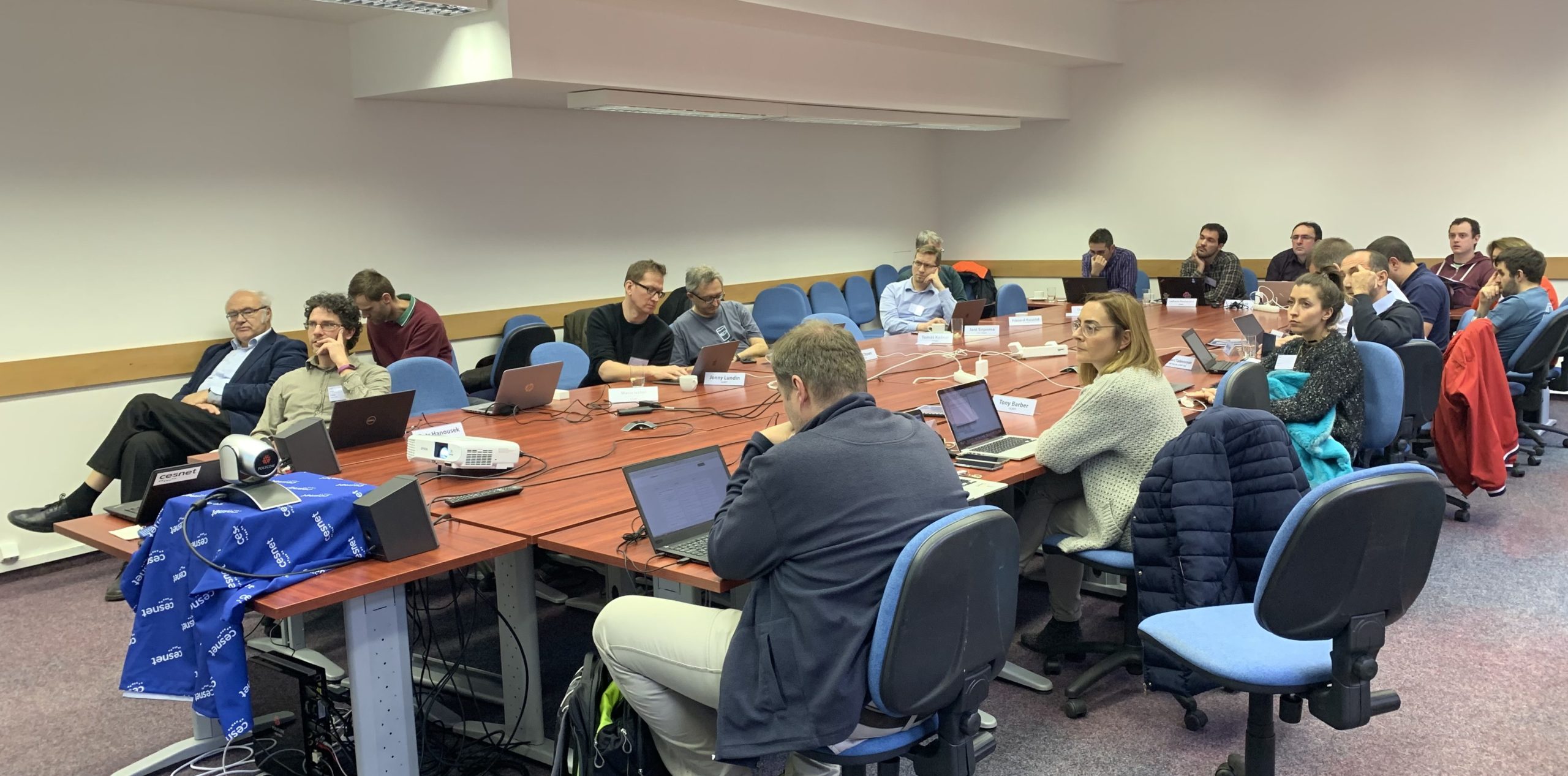22 on-site and 14 remote participants attended the 10th SIG-NOC (Special Interest Group – Network Operation Centre) meeting on 13-14 November in Prague, Czech Republic. During the two-day event, attendees took part in interesting presentations, discussions and debates about a variety of hot topics for NOCs. With a warm welcome from Jan Gruntorád from CESNET, we were guided through the history of the host organisation, its users and services.
“Keeping the competitive edge in the NREN community” was the meeting’s main theme. One of the ways to achieve this is to share knowledge about the latest and most popular tools and processes used by NOC teams. Maria Isabel Gandia from RedIRIS presented the results of the third SIG-NOC tools survey, usage tools trends of the different NOC functions (such as monitoring, problem management or ticketing) and the importance and rating of each tool for a specific function. The report will be published in the coming days.
Further on, we heard from GRNET about the addition of orchestration to their current stack. Their network automation stack consists of some internal – in house developed tools for service/customer databases and network inventory. A tradition of SIG-NOC meetings is to invite representatives from commercial organisations; in Prague, we met ‘Netcope’, a company offering network solutions, closely related to CESNET. DDoS is a frequent subject of SIG-NOC meetings. CESNET gave a presentation on DDoS Mitigation: DDoS Protector which inspects traffic, drops packets according to a given mitigation strategy and forwards the legitimate traffic to the target organisation.
The end of day-one was dedicated to human resources: how to attract and retain valuable NOC personnel in order to maintain success and the competitive edge. Irina Matthews introduced GÉANT’s portfolio of learning services for the European NREN community and spoke about the role of GÉANT Learning and Development (GLAD) to support and develop professional competences and capabilities. Different categories for the development of specific skills were discussed – from technical (eg. ITIL webinars and courses) to professional competencies, capability building, the future talent programme and technology.
Jonny Lundin from SUNET led a discussion about the recruitment of an ideal NOC candidate: finding the best talented engineers is a challenge for the NOC teams. Numerous NOCs are in the process of recruiting new members and are finding it challenging. Ideal candidates should have several years of work experience, a combination of technical, personal and social skills and English language knowledge. We brainstormed on ways to attract the best personnel, find the right words and techniques and learn from each other to promote ourselves better.
In the evening, colleagues from CESNET invited us to a walking tour of Prague, with great sightseeing and story-telling.
Day-two focussed on the Campus Network Management as a Service, monitoring tools and automation. We learned about two major projects of SUNET – CNaaS and Security operations; SURFnet explained to us explained why they are automating the network and discussed Ingredients for an Orchestration utopia. Tim Chown from Jisc and Maria Isabel Gandia presented on how the GN43 project can help NRENs with Orchestration, Automation and Virtualisation (OAV). According to survey results on OAV there is a requirement to continue building the community with GÉANT’s facilitation of further workshops and training sessions.
Tomáš Košňar from CESNET illustrated the tool developed by his team for network Flow Monitoring in the network and some lessons learned. Maria Isabel Gandia presented a summary of the Network Management and Monitoring Workshop, highlighting several NREN use cases on Campus Network Management services. Tony Barber, Head of GÉANT Operations Centre talked about the GÉANT network, its architecture and the equipment deployed. Tim Chown lead a discussion around SIG-PMV (Performance Monitoring Verification) and the possibilities of working together with SIG-NOC and SIG-NGN (new Generation Networks) were also explored during the meeting.
We now look forward to the 11th SIG-NOC meeting, planned for Spring 2020 (date TBC).
For more information on SIG-NOC and how to join it, please click here.







